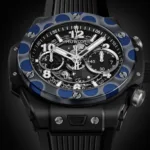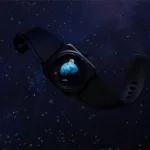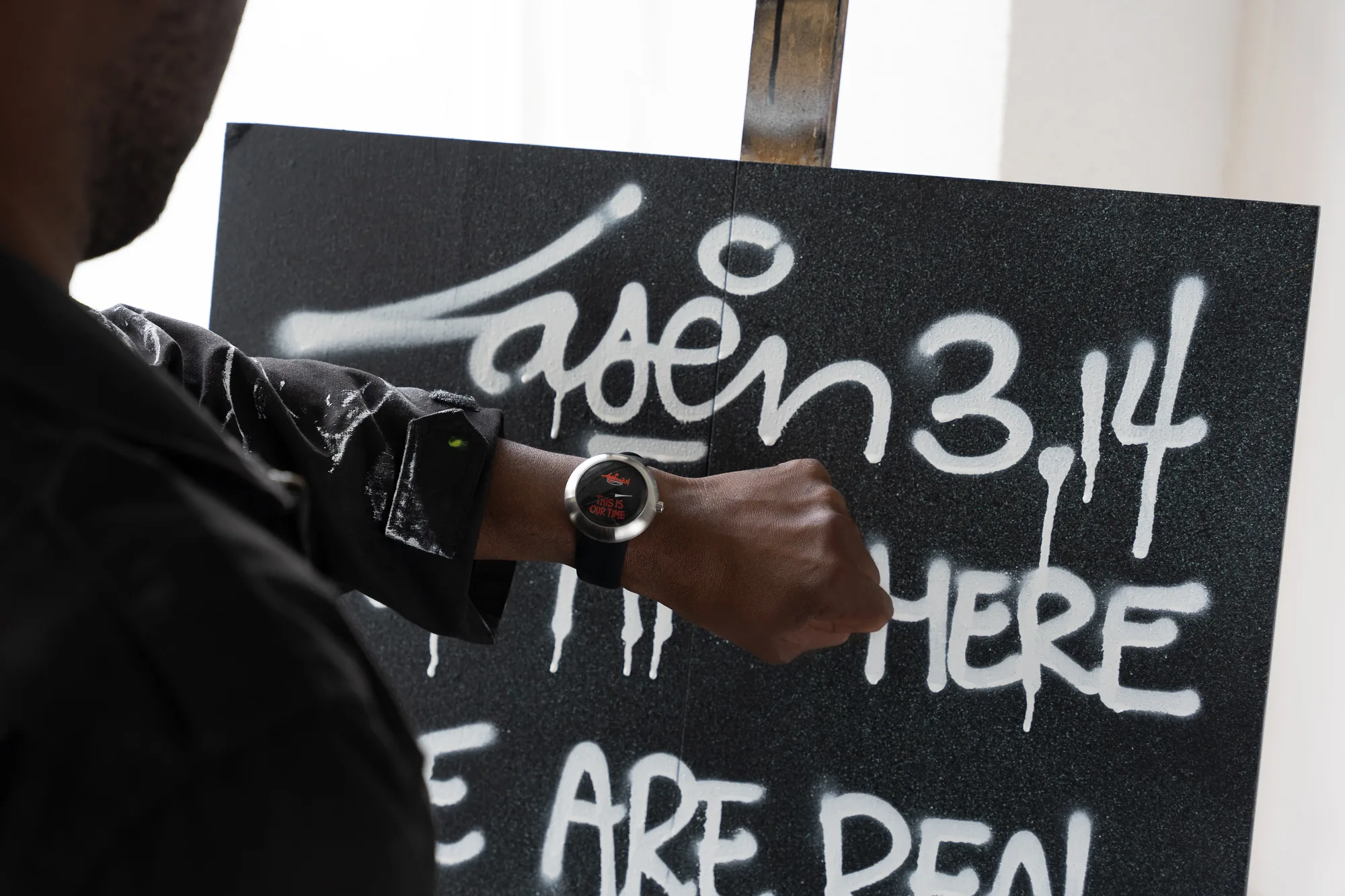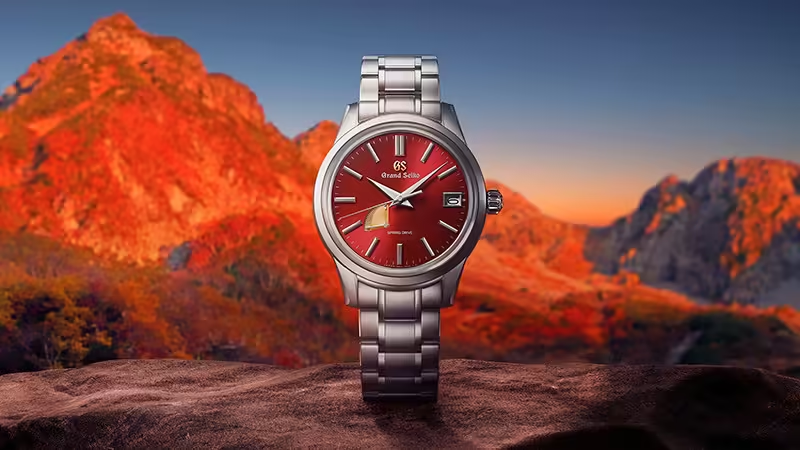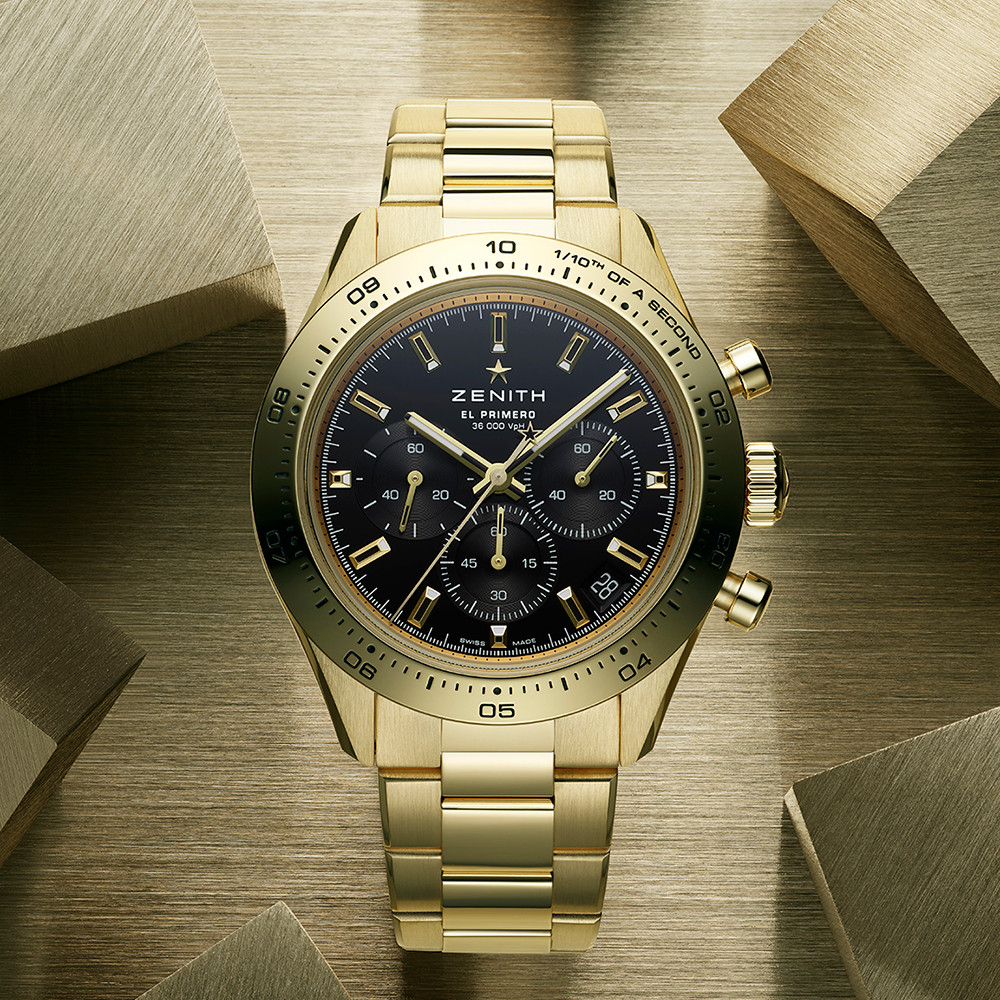This article is part of a series on the 2024 Incredibly Specialized Watch Exhibition;
- Sukiyaki Watch – Designed by Akira Yoshida
- Hide-and-Seek Watch – Designed by Masanori Kawamura
- Patternmaker’s Watch – Designed by Kotaro Usugami
- Panda Lovers Watch – Designed by Kiyotaka Sakai
- Masking Tape Enthusiasts Watch – Designed by Yugo Hibayashi
- Sunny Men Watch – Designed by Yu Ishihara
- Ambidextrous Watch – Designed by Kento Ito
The “Power Design Project 2024” will showcase the Incredibly Specialized Watch Exhibition at Seiko Seed in Harajuku, Tokyo, starting January 19, 2024. Organized by Seiko Watch Corporation, this initiative is part of an annual event that challenges in-house designers to delve deeply into the core of watchmaking, pushing the boundaries of their usual design styles and fostering innovative outcomes.
Centered around the theme of “incredibly specialized watches,” this year’s exhibition features seven designers who have approached the challenge from seven unique perspectives. The objective is to craft watches that are exceptionally exclusive, each creation highlighting fresh appeal through designs tailored to specific roles.
Sunny Men Watch – Designed by Yu Ishihara

Ishihara became a part of Seiko in 2003 and, since 2014, has played a pivotal role in the design team for Prospex and Grand Seiko. Currently holding the position of Design Director in the Design Development Team, he oversees the development and design of the Atelier Ginza models.
The Concept’s Inception
A Yearning for the Ancient Flow of Time
Ishihara’s exploration of expressing the “pleasant flow of time” profoundly influences the worldview in watch design. Reflecting on the harmony with nature experienced by ancestors who synchronized their lives with sunrise and sunset, he conceptualized a watch dedicated to “sunny men”—individuals immersed in daylight, guided by the sun’s temporal trajectory. In this context, the movement of shadows under the bright sun imparts the sensation of temporal progression, offering a unique way to experience time.
Insights from History

The Origin of Timekeeping Methods
Ishihara acknowledged the historical roots of timekeeping methods, with sundials dating back approximately 6,000 years, water clocks around 3,600 years, and mechanical timepieces about 750 years (though subject to varying theories).
Expert Commentary by Takuma Kawauchiya
Takuma Kawauchiya, the movement designer of Kodo, Grand Seiko’s first mechanical complication watch with a world’s first mechanism, highlighted the significance of the sundial as the oldest known timekeeping method. He noted its adaptability, precision, and even the inclusion of the equation of time. However, he humorously questioned its usability on rainy days, suggesting that rainy men might prefer another model.
The Concept’s Realization
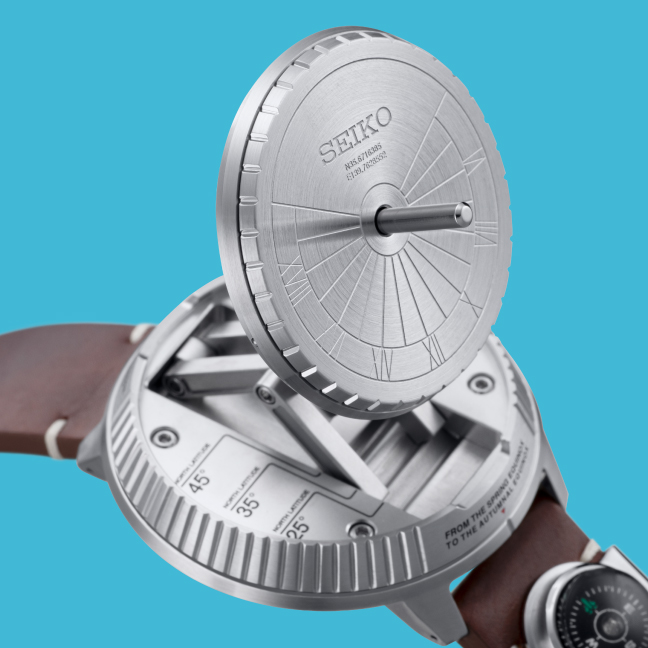
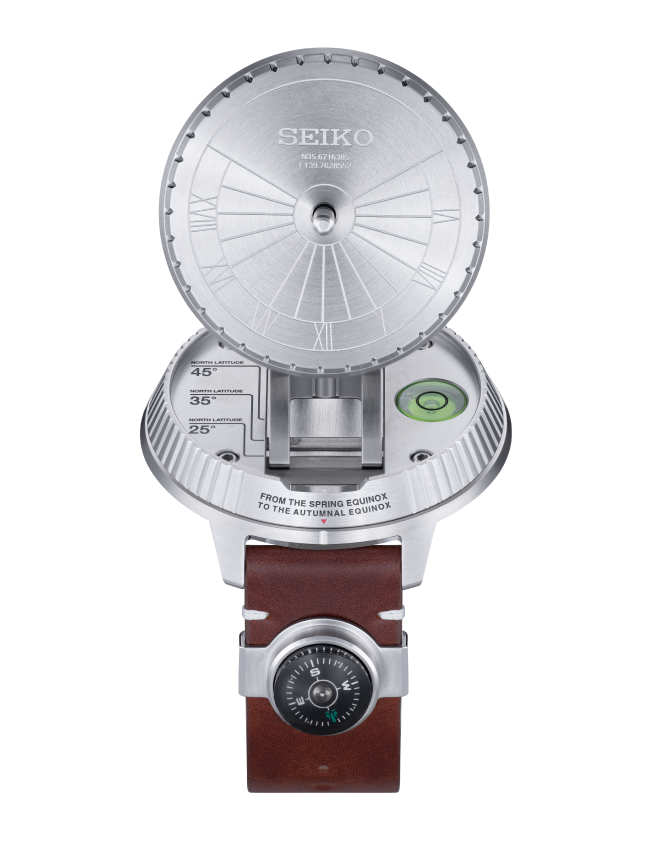
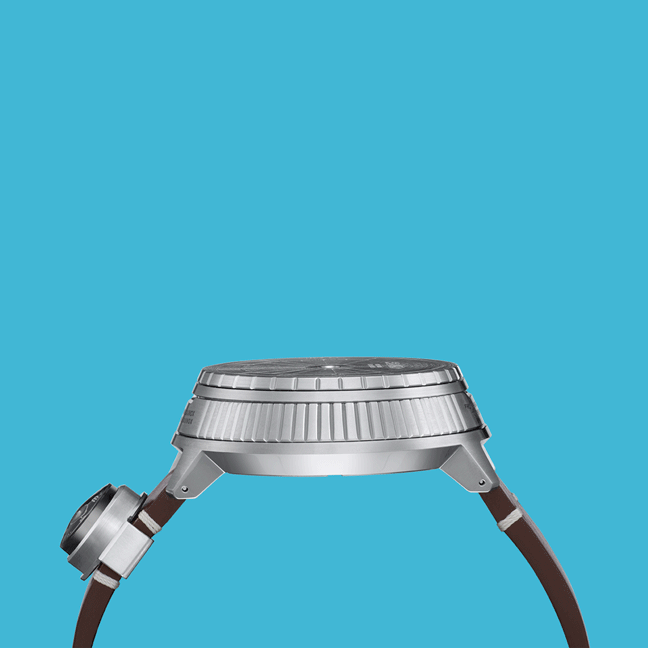
A Portable Observatory for ‘Sunny Men’
While the watch may initially seem like a simple piece of metal, it transforms into a “miniature astronomical observatory” designed exclusively for ‘sunny men.’ It boasts high accuracy in tracking celestial movements, with a precision of -1.59 milliseconds per day or -0.58 seconds per year. This portable observatory encapsulates the essence of timekeeping and celestial observation on the wrist.
The circular dial positioned atop the conical case doubles as a lid. Elevating it initiates a three-dimensional transformation, causing the case to rise instantly. Within the open case, a small metal stick serves as the gnomon (projection rod), capable of insertion into the dial’s center.
To ensure accurate time determination, the gnomon must face the North Star, considering the changing path of the sun on the celestial sphere based on latitude. “Fixation grooves” are incorporated for 25°, 35°, and 45° north latitude as helpful guides. Inside the open case, a spirit level maintains the case’s base level, minimizing potential errors in measurements.
Precise sundial functionality requires the adjustment of longitude. By rotating the dial, the longitude, representing the time difference from the standard reference point, can be set. This feature enables the watch to function as a sundial, providing accurate time indication even beyond Japan.
The back side of the dial, responsible for longitude adjustments through rotation, allows the gnomon to cast its shadow on the back instead of the front, depending on the season, indicating the time.
For year-round readability, the upper portion of the sundial rotates 180 degrees based on the season (calendar) when worn on the wrist, showcasing a unique and functional design.
